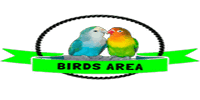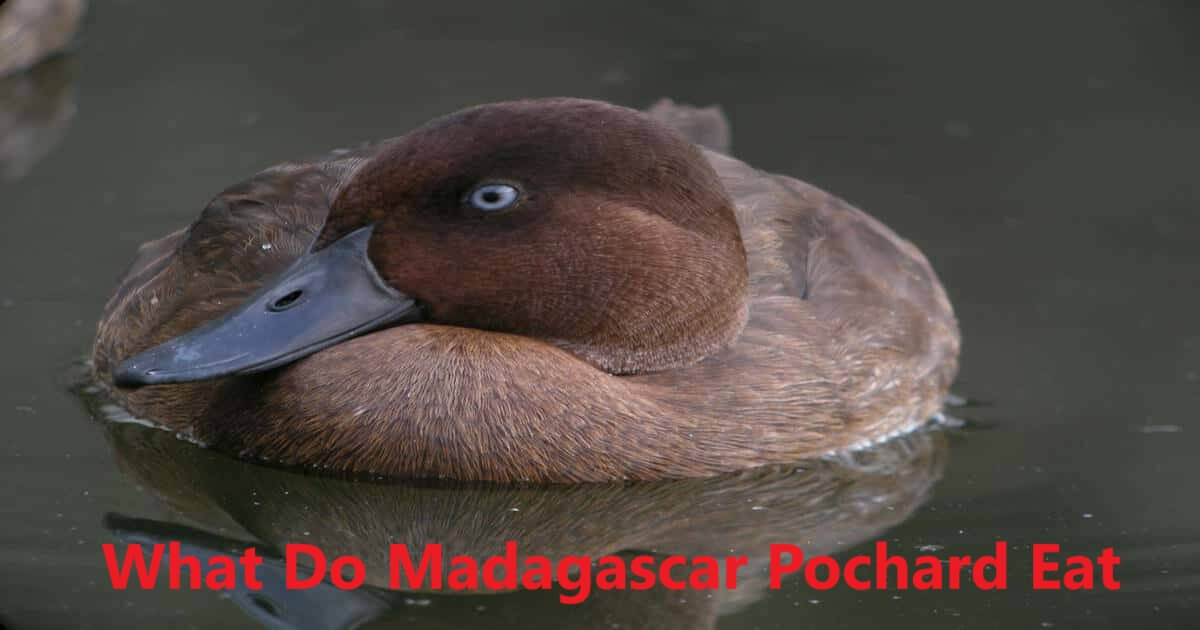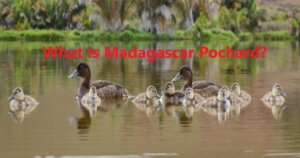What Do Madagascar Pochard Eat?
Madagascar Pochard eat small aquatic animals and plants. Their diet includes insects, snails, and seeds.
The Madagascar Pochard is a rare duck species found in Madagascar. Understanding their diet is crucial for their conservation. These ducks feed on a variety of foods found in freshwater lakes and ponds. Knowing what they eat helps scientists ensure their habitat provides enough food.
This blog post dives into the specific foods that sustain these unique birds. If you care about wildlife or are curious about bird diets, read on. Let’s explore the fascinating diet of the Madagascar Pochard and learn how it supports their survival.
Introduction To Madagascar Pochard
The Madagascar Pochard is a rare duck species. It is native to Madagascar. This bird is one of the world’s rarest ducks. Scientists once thought it was extinct. But a small population was discovered in 2006. The discovery brought hope for its survival.
The Madagascar Pochard is known for its striking appearance. It has a dark brown body and a white belly. The eyes are bright red, making it easy to identify. This bird prefers freshwater lakes and ponds. It thrives in these wetland habitats.
Brief Overview
The Madagascar Pochard is a diving duck. It feeds primarily underwater. Its diet includes various aquatic plants and insects. These ducks also eat small fish and crustaceans. They are adept at finding food in their wetland habitats. The species is well-adapted to diving for its meals.
Conservation Status
The Madagascar Pochard is critically endangered. There are fewer than 100 individuals in the wild. Habitat loss is a significant threat. Human activities have degraded their natural habitats. Conservation efforts are crucial to their survival.
Several organizations are working to protect this species. They focus on habitat restoration and captive breeding. These efforts aim to increase the population. Raising awareness is also part of the conservation strategy. The goal is to ensure the Madagascar Pochard’s long-term survival.
Habitat And Environment
The habitat and environment of the Madagascar Pochard play a crucial role in their diet. Understanding where they live helps us know what they eat. This section explores their natural habitats and the environmental factors that impact their food sources.
Natural Habitats
Madagascar Pochards thrive in shallow freshwater lakes. These lakes are surrounded by dense vegetation. The birds prefer clear waters. They avoid areas with heavy human activity. These natural habitats provide them with plenty of food. Small fish, insects, and aquatic plants are common in these lakes.
Environmental Factors
Several environmental factors affect the Madagascar Pochard’s diet. Water quality is key. Clean, unpolluted water supports more food sources. Temperature also plays a role. Warmer waters can increase the number of insects. Vegetation around the lakes is important too. Plants provide cover and breeding grounds for insects and fish. Human activities can disrupt these factors. Pollution and deforestation reduce available food. Conservation efforts focus on protecting these environments.
Diet Composition
Madagascar Pochard mainly eat aquatic insects, small crustaceans, and plant seeds. They often find food by diving in freshwater lakes. Their diet helps maintain their unique ecosystem.
The Madagascar Pochard, one of the rarest ducks in the world, has a unique diet. Understanding their diet composition is crucial for conservation efforts. The diet of the Madagascar Pochard varies based on available food sources and seasons.
Primary Food Sources
Madagascar Pochards primarily eat aquatic invertebrates. These include insects, snails, and small crustaceans. They also consume plant matter, such as seeds and roots of aquatic plants. Their diet is rich in protein and essential nutrients. This helps them stay healthy and active.
Seasonal Variations
During the wet season, food is abundant. Madagascar Pochards find plenty of insects and aquatic plants. In the dry season, their diet changes. They rely more on seeds and roots. Water levels drop, so they adapt to what is available. This seasonal variation ensures they survive all year round.
“`
Feeding Behavior
The Madagascar Pochard is a rare diving duck found in Madagascar. Understanding their feeding behavior gives insight into their daily lives. This behavior is crucial for their survival. It involves specific techniques and timing. Let’s explore these aspects in detail.
Foraging Techniques
Madagascar Pochards use various foraging techniques. They are primarily divers. This means they dive underwater to find food. They search for aquatic plants, insects, and small fish. Their diet is diverse.
- Diving: They dive to reach food at the bottom of lakes.
- Surface Feeding: Sometimes, they feed on the water’s surface.
- Grazing: They also graze on plants near the shore.
These techniques help them survive in their natural habitat. They are adaptable feeders.
Time Of Feeding
The time of feeding is crucial for Madagascar Pochards. They are most active during the early morning and late afternoon. These times are ideal for finding food. During these periods, the water is calm, and prey is more available.
| Time of Day | Feeding Activity |
|---|---|
| Early Morning | High |
| Late Afternoon | High |
| Midday | Low |
They adjust their feeding times based on the availability of food. This strategy helps them conserve energy. It also ensures they get the nutrition they need.
Aquatic Plants And Algae
The Madagascar Pochard, an endangered duck, relies heavily on aquatic plants and algae for sustenance. These food sources provide essential nutrients. They also play a crucial role in the bird’s diet and overall health.
Common Aquatic Plants
Madagascar Pochards consume a variety of aquatic plants. These include species like pondweed and water lilies. These plants are rich in nutrients. They aid in the bird’s growth and survival.
Pondweed is a favorite among these ducks. It grows in shallow waters, making it easy to access. Water lilies also provide a good food source. Their leaves float on the surface, offering an easy meal.
Role Of Algae
Algae form a significant part of the Madagascar Pochard’s diet. These tiny organisms are packed with vitamins and minerals. They are found in abundance in their natural habitat.
Algae not only nourish the ducks. They also support the entire aquatic ecosystem. By consuming algae, Madagascar Pochards help maintain water quality. This balance is vital for the survival of other species too.
Invertebrates And Small Fish
Madagascar Pochard, an endangered duck species, has a diverse diet. They consume a variety of invertebrates and small fish. Understanding their diet helps in conservation efforts.
Types Of Invertebrates
Madagascar Pochard feeds on various invertebrates. These include:
- Insects: They eat larvae, beetles, and flies.
- Crustaceans: Small shrimp and water fleas are common.
- Mollusks: Snails and small clams are part of their diet.
These invertebrates provide essential nutrients. They are abundant in their habitat.
Fish Consumption
Small fish are another crucial part of their diet. They eat species such as:
- Minnows: Easy to catch and digest.
- Fingerlings: Young fish of various species.
These fish are rich in protein. They help the Pochard stay healthy and strong.
The diet varies with availability. During breeding season, they may prefer protein-rich foods.
Understanding the diet of Madagascar Pochard is important. It helps in their conservation and ensuring their survival.
Impact Of Diet On Health
The diet of the Madagascar Pochard, a critically endangered duck species, plays a crucial role in its overall health and survival. Understanding their dietary needs is essential for their conservation and wellbeing.
Nutritional Benefits
The Madagascar Pochard primarily feeds on aquatic invertebrates, seeds, and plant matter. This diet provides essential nutrients that are vital for their growth and energy.
- Protein: Found in aquatic invertebrates, helps in muscle development and repair.
- Vitamins and Minerals: Seeds and plant matter provide essential vitamins and minerals.
- Fats: Some seeds and invertebrates offer healthy fats necessary for energy storage.
These nutrients support the birds’ immune system, making them more resilient to diseases. They also help in maintaining their feathers, crucial for insulation and flight.
Diet-related Health Issues
A poor diet can lead to several health problems in the Madagascar Pochard. Lack of proper nutrients can weaken their immune system, making them prone to infections.
- Malnutrition: Inadequate intake of protein can cause malnutrition, affecting their growth and reproduction.
- Deficiencies: Lack of vitamins and minerals can lead to various deficiencies.
- Obesity: Overconsumption of certain seeds can lead to obesity, affecting their ability to fly.
Maintaining a balanced diet is essential for their survival. Conservation efforts must ensure they have access to diverse food sources to keep them healthy.

Credit: animalia.bio
Conservation Efforts
Conservation efforts play a vital role in preserving the rare Madagascar Pochard. These efforts ensure these unique ducks have the right conditions to thrive. Conservationists focus on restoring their natural habitat and providing necessary food supplies.
Habitat Restoration
Restoring the natural habitat of the Madagascar Pochard is crucial. These ducks need clean, safe wetlands to survive. Conservationists work hard to remove pollutants from lakes and rivers. They also plant native vegetation. This provides shelter and food for the ducks. Clean water is essential for their survival. Efforts to reduce pollution help improve water quality. Creating protected areas also ensures their habitat remains undisturbed.
Feeding Programs
Feeding programs support the ducks’ diet during tough times. In the wild, Madagascar Pochards eat aquatic insects, plants, and small fish. Conservationists supplement their diet with nutritious food. This helps them stay healthy and strong. Feeding programs are especially important during breeding season. Proper nutrition ensures chicks grow up healthy. These programs also help in times of drought or food shortages.
Here is a list of food items provided in feeding programs:
- Insects
- Small fish
- Aquatic plants
- Specially formulated pellets
By focusing on habitat restoration and feeding programs, conservationists give the Madagascar Pochard a better chance at survival. These efforts are crucial for preserving this rare species.
Frequently Asked Questions
What Do Madagascar Pochards Primarily Eat?
Madagascar Pochards primarily eat aquatic invertebrates, seeds, and small fish. They dive underwater to forage for food.
Do Madagascar Pochards Eat Plants?
Yes, Madagascar Pochards also consume aquatic plants and seeds, which are essential for their diet.
How Do Madagascar Pochards Find Their Food?
Madagascar Pochards dive underwater to search for aquatic invertebrates, seeds, and small fish.
What Time Of Day Do Madagascar Pochards Feed?
Madagascar Pochards are most active and feed during the early morning and late afternoon.
Conclusion
Madagascar Pochard’s diet is fascinating. They primarily eat aquatic plants and insects. Small fish and crustaceans also form part of their meals. This diet ensures they get essential nutrients. Protecting their habitat supports their food sources. Understanding their diet helps conserve these rare birds.
Let’s work together to preserve their future. Every effort counts.
Hello Dear, I'm Poli Kolymnia, owner of many birds (including budgies).
With a deep passion for these feathered companions, I'm here to share my expertise and extensive knowledge on birds care.
My articles cover essential topics like diet, housing, care, and health, providing practical tips to help you create a happy and thriving environment for your birds.



